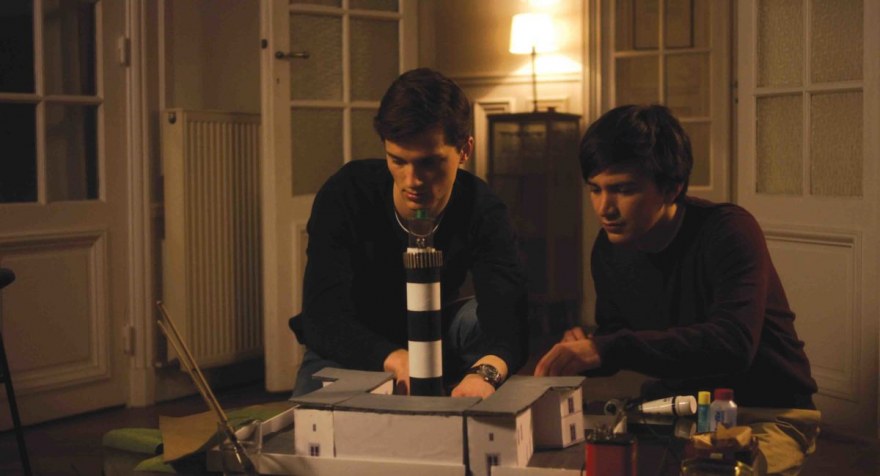Lunch with Tomber
Interview with Benjamin Vu, director of Tomber
Did you writeTomber as a complete film, or is it the beginning of a larger project?
The idea of a larger project was actually what led to Tomber. In fact, before writing the short film, the idea for a feature-length film on the same subject had already been rattling about my head for several months. I wanted to focus on a literary classic and the impact it could have on two boys. In the beginning, I had conceived the story around Flaubert’s Madame Bovary. The boys would have taken a road trip to Normandy, and would have encountered challenges as they worked on their project. It was more narratively ambitious. The end however would have been the same as the short film: open, with that exchange of glances.
Why did you want to place the action in the 1990s?
I was looking for a temporal context where the characters wouldn’t be easily distracted and have their attention drawn away by today’s technological devices (computers, mobile phones, etc.) and where they would be more naturally inclined to meet physically to prepare the report and to have real discussions. Also, having been born in the 1990s, I wanted to pay tribute to an era that is familiar and dear to me, despite it being so long ago. However, I didn’t want this to be a dominant factor in the film. Outside of the notebook that reads “1994” in the beginning, the temporal context, as well as the spatial context, remain a bit blurry. I paid close attention to the costumes, so that they would make sense with the time period without trying to be too different from the clothes that are worn today. Also, we shot in digital instead of on film reel as would have been more logical if we wanted to accentuate the era. This visual anachronism seemed more interesting to me, because in the end, I wanted there to be a timelessness in both the story and in the emotions.
How did you construct the moments of silence amongst the dialog?
Tomber is a very talkative film, but my first ambition was to express the most interesting things during the moments of silence where the characters weren’t speaking, thanks to the images, particularly by lingering on their glances. I think about the last shot of the film, or the shot where the camera takes time to discover Baptiste’s reaction when he is listening to the music at the table. I wanted the story to gradually be read on his face. Furthermore, most of the film scenes are fixed shots. There is something still and mathematical about it. But there are two moving sequences that are different from the rest and which echo each other: at the beginning of the film, when Baptiste turns around to look at Léo in the classroom, and at the end of the film when Léo returns to the living room and realized that Baptiste had helped him. They are two silent moments that translated into an idea of discovery, even a feeling of love. I wanted the camera to highlight this intangible, indefinable feeling.
What interested you in the light-dark lighting effects?
Without actually using a true light-dark lighting effect, I worked with Maxence Lemonnier, the photography director, to come up with a lighting that plunges the action and the characters in an intimate setting. The lighting is set up at fixed points, and brings out the faces to cause a suspension in time and to bring the bodies closer, resulting in a disconnection between the meeting space and the rest of the world. Using zones of shadows and darkness, we also wanted to instill a certain mystery so that the film would have the slight air of a film noir, or almost like a detective movie. I like the idea of discovering a character as if by leading an investigation where we gather clues on the characters: a word, an intonation, a glance.
Do you foresee directing other films where homosexual characters are represented?
Certainly.
Are there particular freedoms that the short film format allows you?
The short film format allowed me a freedom of simplicity and encouraged me to focus on the essentials.








